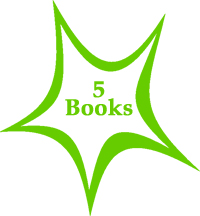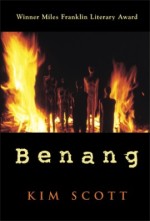 Thanks to the power of social media and the efforts of two bloggers — Dan, who blogs at From Inside the Dog, and Naomi, who blogs at The Writes of Woman — this month has been designated #DiverseDecember. This encourages everyone to promote and read books by BAME (Black, Asian and Minority Ethnic) writers in order to redress the balance, which tends to favour writers from white backgrounds (and usually from the US or UK).
Thanks to the power of social media and the efforts of two bloggers — Dan, who blogs at From Inside the Dog, and Naomi, who blogs at The Writes of Woman — this month has been designated #DiverseDecember. This encourages everyone to promote and read books by BAME (Black, Asian and Minority Ethnic) writers in order to redress the balance, which tends to favour writers from white backgrounds (and usually from the US or UK).
Having read more about the initiative in this brilliant blog post by Naomi, I began to wonder whether I had an inherent bias against BAME writers, too. Though this blog tries to focus on Australian and Irish authors, I was surprised to see I do, actually, read writers from non-white backgrounds, too, though perhaps not as many as I should.
I thought I would highlight five of my favourites since I began book blogging in 2004. The books have been arranged in alphabetical order by author’s name — click the title to see my full review:
 ‘Song For Night’ by Chris Abani (2007)
‘Song For Night’ by Chris Abani (2007)
This powerful novella is set in an unspecified African nation. The story is told from the perspective of a child soldier, who is taught to detect unexploded land mines with his bare feet and then disable them with a knife. His vocal chords have been cut, “so that we wouldn’t scare each other with our death screams” whenever a fellow soldier is blown up by a mine. Song for Night is not a pleasant read, but amid the terror and the brutality, there is a deep, underlying humanity here, about what it is like to have your childhood stolen from you, a world in which life is cheap and hate comes easily.
 ‘The Yacoubian Building’ by Alaa As Aswan (2004)
‘The Yacoubian Building’ by Alaa As Aswan (2004)
Set in downtown Cairo at the time of the 1990 Gulf War, this intriguing novel shows Egyptian life in the late 20th century through the eyes of a diverse range of characters, all of whom live in a single apartment block. It charts the struggles of a wide cross-section of society, from the underclass that live in cramped conditions in converted storage rooms on the roof of the building, to the wealthy residents who inhabit the building’s apartments. This allows the author to show the apparent contradictions in Egyptian society where people with different religious, political and moral viewpoints live side by side, not always in harmony.
 ‘Half Blood Blues’ by Esi Edugyan (2011)
‘Half Blood Blues’ by Esi Edugyan (2011)
This novel about jazz musicians living in Berlin during the Second World War won the Giller Prize in 2011. It is narrated by Sidney Griffiths, a black bass player from Baltimore who spent his formative years in Berlin during the 1930s and 40s, looking back on his life half a century later. The narrative swings back and forth across time — from Berlin and Paris during the war, and Berlin and Poland 50 years later. It’s a fascinating account of one man’s experiences — his love affairs, his musical rivalries and fierce jealousies, his guilt and much-too-late atonement for one cruel act that he can never take back. It’s a thrilling, adventure-filled read.
 ‘The Attack’ by Yasmina Khadra (2007)
‘The Attack’ by Yasmina Khadra (2007)
The Attack, set in Israel, is about a suicide bomber. It opens with Dr Amin Jaafie, a surgeon in a Tel Aviv hospital, dealing with the bombed and bloodied victims of a terrorist attack in a downtown pizza restaurant that has killed 19 people. As a naturalised Israeli Arab, Dr Jaafie has worked hard to be respected, admired and accepted by the Jewish culture in which he could so easily be cast as an outsider. A dedicated doctor, married to the woman of his dreams, he socialises in fashionable circles, but now his whole life has been turned on its head. What was it about his wife that made her carry out this despicable act, and what clues did he miss? The book follows his quest to find answers to these questions…
 ‘Benang: From the Heart’ by Kim Scott (1999)
‘Benang: From the Heart’ by Kim Scott (1999)
This story about Australia’s history of white subjugation of indigenous people was a joint winner of the Miles Franklin Literary Award in 1999. It is narrated by Harvey, who comes to slowly understand his place in his family line — “the product of a long and considered process” to create a white man from a long line of people with aboriginal blood. This process has been overseen by his grandfather as part of a disturbing scientific experiment in which he has been trying to “breed out” the Aboriginal blood in successive generations. His efforts mirror those of the settlements and missions in the early part of the 20th century in which Australia operated a crude system of apartheid designed to separate whites from blacks. This incredibly moving, often challenging, book left me with a giant lump in my throat…
For more inspiration, please do check out my BAME writers tag.
Have you read any of these books? Or can you recommend others by BAME writers? Are you taking part in #DiverseDecember?

Ohh I have only read one of these (Half Blood Blues) and really loved it so must find a way of including the others in my life. I had a rather ambitious library visit with #diversedecember in mind today – if I manage two or three of them I’ll be happy!
LikeLike
Now, why didn’t I think of going to the library? I went to Waterstones last weekend and had a #diversedecember splurge — and I have absolutely no space to put these books!
LikeLike
Many books on blog, but have to many books piled up to take part
LikeLike
I reckon you probably read more than your fair share of BAME writers without even trying, Stu 😉
LikeLike
I have read one by Yasmina Khadra The African Equation which was enjoyable and a very interesting alternative perspective, on pirates in the gulf and aid workers.
I recently really enjoyed Dinaw Mengestu’s All Our Names and can’t wait to read the book with which he won The Guardian First Book Award Children of the Revolution, his work is based in Ethiopia/Uganda and he is an really talented writer.
But most of the Diverse reading I do favours women writers, I’ve been bingeing on Maryse Condé, first her non fiction work, Tales of the Heart and Victoire, My Mother’s Mother and then the novel she is acclaimed for Segu. She writes in French, is from Guadeloupe, but I read her work in English, she was one of the nominees for the Man Booker INternational for her life’s work.
Have also enjoyed and will read more of Edwidge Danticat, the Haitian writer, Breath, Eyes, Memory.
I love Jamaica Kincaid, her novel The Autobiography of My Mother was one of my Top Reads for 2015, such an original and compelling voice.
A new voice from Nigeria that I enjoyed recently was Chinelo Okparanta’s courageous novel Under the Udala Trees.
I am also happy to have a pile of up and coming to read books by Zora Neale Hurston, Bessie Head and more from Danticat and Kincaid.
I’m not really participating in #DiverseDecember, as my cross cultural preferences lead me right there anyway!
LikeLiked by 1 person
Such a great comment, Claire, and filled with so many great reading ideas. I’ll be investigating these further and no doubt adding to my wishlist. I have a copy of The African Equation here, along with Yasmina Khadra’s The Dictator’s Last Night, which Helen Stanton has just recommended to me on Twitter.
LikeLiked by 1 person
I would like to read more diverse authors. My focus in this area is indigenous Australian authors, but the gap between plan and reality is huge. In the Australian Women Writers Challenge we track diversity and have a contributor who writes up our progress in this area. For our challenge, diversity is wider than ethnicity. It encompasses, for example, sexual orientation (LGBTI etc writers) and writers with disabilities.
LikeLike
You make a good point about diversity and how it should be defined. I admit that I have some problems with the term BAME, because I think it risks ghetto-izing (is that a term?) writers based on the colour of their skin or ethnicity, and some writers may not appreciate that. Also, if you are third generation Indian living in the UK, for example, do you identify as a “person of colour” or do you call yourself a Brit? Are the two mutually exclusive? And what constitutes an ethnic minority anyway? Surely these are different depending on what country you are in? I find that these kinds of labels throw up more questions than they answer…
LikeLike
Yes, very good questions … I guess in the end there is some value in identifying “them” – helps get the word out about difference and other – so I tend to go with self-identification. How does each writer identify him or herself?
LikeLike
A few from Canada, off the top of my head: George Elliott Clarke, Richard Wagamese, Thomas King, Eden Robinson, Lee Maracle, Lawrence Hill, Shani Mootoo, and Dionne Brand. And, so many more!!
LikeLike
Some great suggestions, Naomi, thanks so much for supplying them. Many are new names to me…
LikeLiked by 1 person